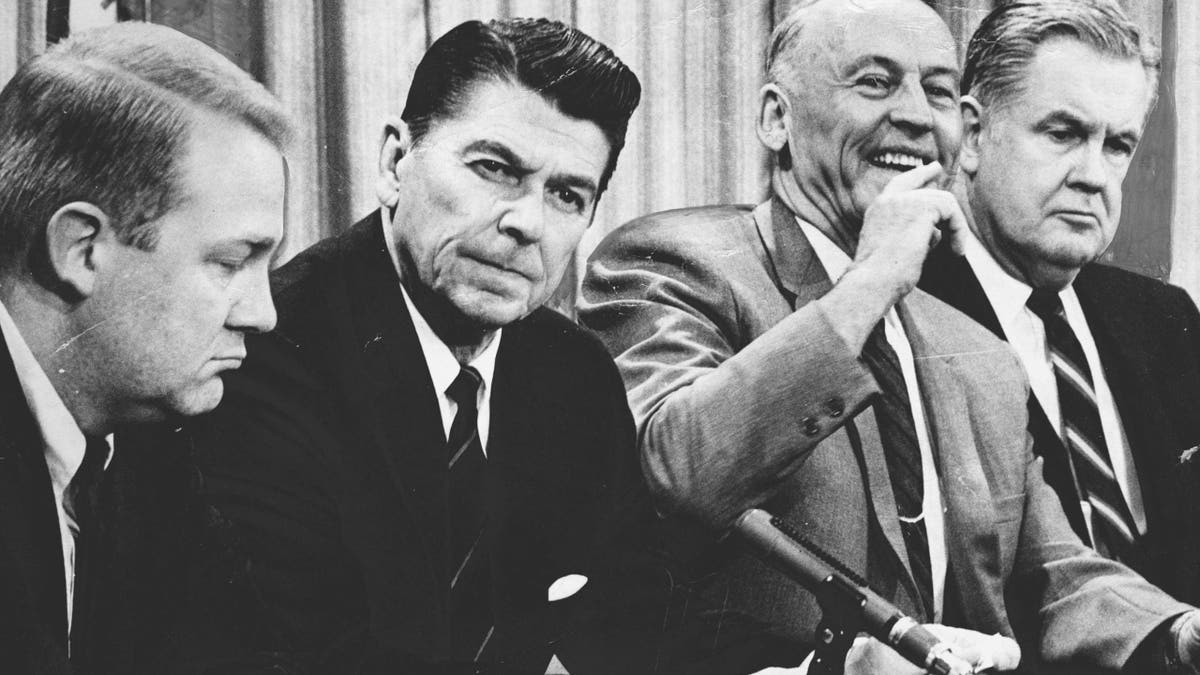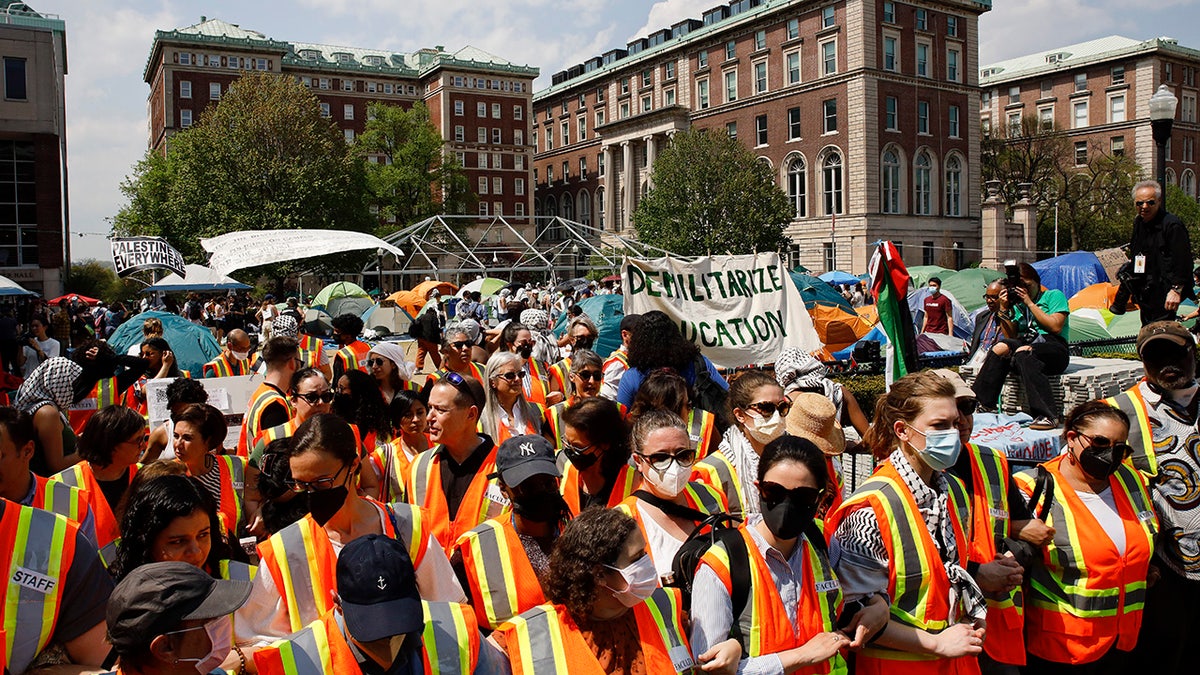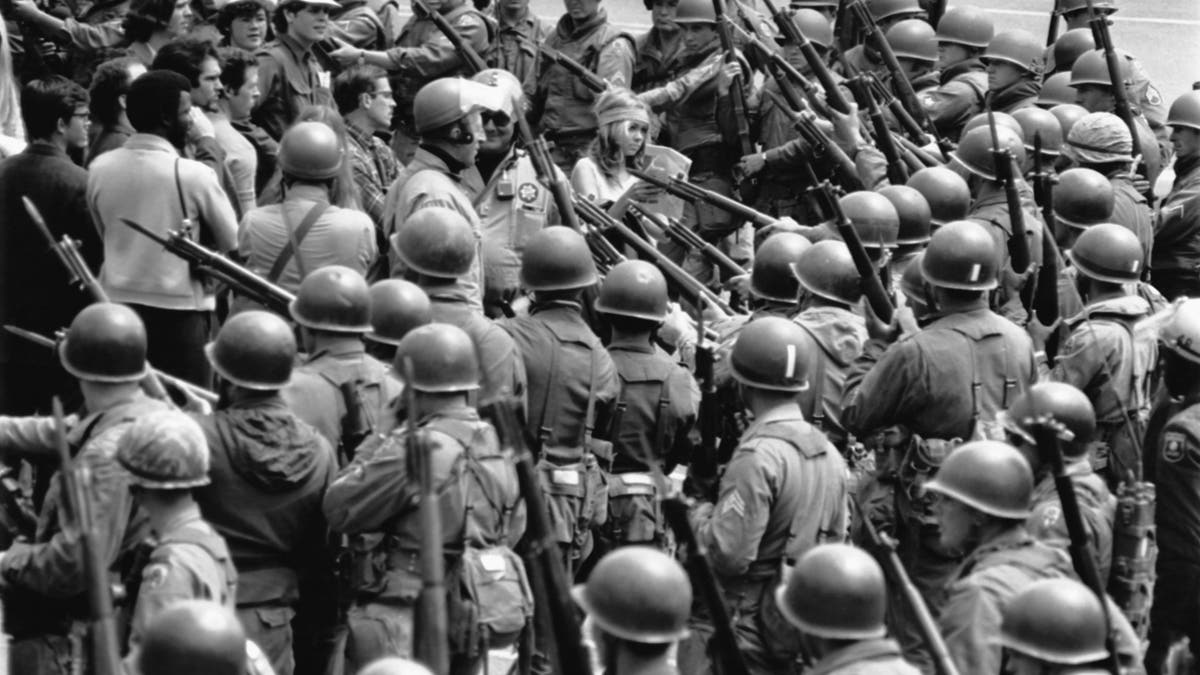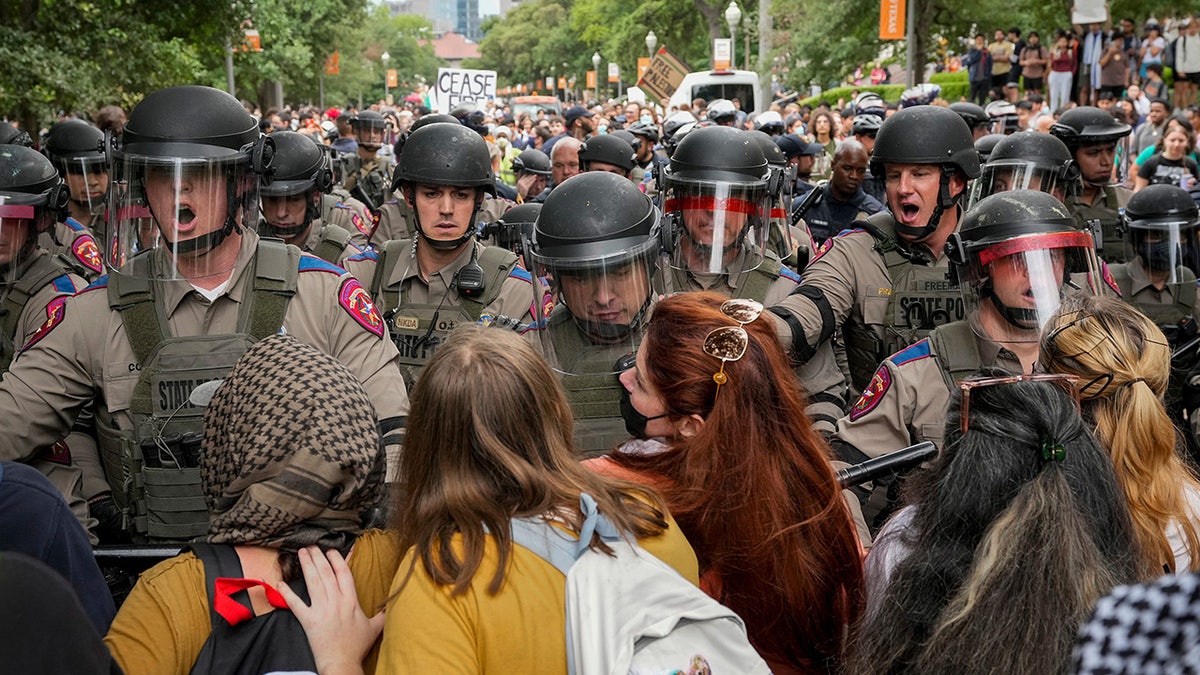Every Columbia student is shaken, particularly Jewish students: Columbia student
GW student Sarah Renbaum and Columbia student Parker De Deker join ‘Fox News Live’ to discuss how they’ve been affected by campus protests.
There is little doubt that the nation’s attention has been drawn to the crisis taking place on university campuses. Student protests over the Israel-Hamas war have popped up on an increasing number of college campuses as students are calling for universities to separate themselves from any companies that are advancing Israel’s military efforts in Gaza – and in some cases from Israel itself.
As we have seen on the news, university presidents, mayors, governors and the president seem paralyzed regarding what to do next. Students from Jewish backgrounds have been told to leave their campus for safety. End-of-year graduation celebrations have been canceled due to the protests.
What should our leaders do? Is there an example from the past that could serve as a guide for our leaders today?

California Gov. Ronald Reagan, flanked by executive secretary Edwin Meese III, left; Alameda County Sheriff Frank I. Madigan, second from right, and California Highway Patrol Commissioner H.W. Sullivan, proclaims "a state of extreme emergency" exists at the University of California, Berkeley, on Feb. 6, 1969. (Sacramento Bee/Tribune News Service via Getty Images)
The crisis of college demonstrations and occupation of buildings is not unique in our nation’s history. While the subject of campus protests has differed over the years, each have started under the guise of "mostly peaceful protests." Unfortunately, 2024 protests have resulted in increasing levels of violence, threats against fellow students and disruption of university functions.
BIDEN DONORS FUNDING GROUPS BEHIND ANTI-ISRAEL PROTESTS ON COLLEGE CAMPUSES: REPORT
In his 1966 campaign for California governor, Ronald Reagan was confronted with a similar dilemma – what to do with campuses out of control. Students across the state had disrupted the educational experience, leaving some universities in chaos.
As a candidate, Reagan promised to "to clean up the mess at Berkeley," referring to the unrest prevalent at the University of California, Berkeley, and college campuses throughout the state. Students and faculty were engaged in protests, demonstrations and strikes related to issues such as the draft and civil rights.

Columbia University faculty and staff gather on the campus in solidarity with student protesters who are demonstrating against the university's investments in Israel, April 29, 2024, in New York. (AP Photo/Stefan Jeremiah)
His campaign for governor in 1966 provided Reagan’s thoughts about protests spiraling into "rioting, with anarchy". He pointed to university administrators and faculty, who "press their particular value judgments" on students, leading to "a leadership gap and a morality and decency gap" on campus. Reagan suggested a code of conduct be imposed on faculty to "force them to serve as examples of good behavior and decency."
AS A HOUSE REPUBLICAN LEADER, HERE'S OUR MESSAGE ON CHAOS, ANTISEMITISM FOR UNIVERSITY PRESIDENTS
The events of 1969 provide insight into how Gov. Reagan would handle increasingly violent protests today. Students at University of California, Berkeley, had been using a vacant plot of land for protests against the Vietnam War and decided to block the university from developing it.
When the university attempted to erect a fence around the plot of land, thousands of students soon arrived to protest, with actions turning into a riot. Gov. Reagan ordered the Berkeley police and California Highway Patrol to restore order.

In response to student demonstrations over the closure of People's Park in 1969, Gov. Ronald Reagan called in the National Guard to restore order on the University of California, Berkeley campus. (Ted Streshinsky/CORBIS/Corbis via Getty Images)
Following the initial conflict and to maintain order, Reagan declared a state of emergency and sent in 2,700 National Guard troops. He enacted a curfew and banned public assembly for two weeks. Order was restored as the National Guard patrolled the streets of Berkeley, dispersing any crowd of four or more.
ANTIFA RETURNS WITH A VENGEANCE IN COLLEGE MOBS. HERE'S WHAT THE FUTURE HOLDS
In a press conference after the state of emergency, Reagan defended his actions, saying, "Those people told you for days in advance that if the university sought to go ahead with that construction, they were going to physically destroy the university."
Someone in a press conference crowd shouted at Reagan, saying he should have negotiated with the students. The governor’s response captured the lesson of the day: "Negotiate? What is to negotiate? All of it began the first time some of you who know better and are old enough to know better let young people think that they have the right to choose the laws they would obey as long as they were doing it in the name of social protest." Then Gov. Reagan walked out of the room.

State troopers in riot gear try to beak up an anti-Israel protest at the University of Texas on April 24, 2024. (Jay Janner/American-Statesman)
CAMPUS ‘OCCUPATION GUIDE’ TAPS INTO AGITATORS' ‘RAGE,’ INSTRUCTS HOW TO ‘ESCALATE' CHAOS
Later in service as governor, Reagan was again confronted by campus violence following the Kent State shooting in May 1970. Faced with possible violence and demonstrations across the University of California system, Reagan closed the campuses for four days to allow citizens "to pause long enough to take inventory."
His words of warning can serve as an example of what Reagan might do today.
"Lest there be any who would misread the meaning and purpose of this four-day period, let me assure you that any resort to violence or destruction, as illegal individual or mob action, will be dealt with – firmly and immediately. And those who engage in such acts will be fully exposed for who and what they are."

Anti-Israel protesters stand with shields across from members of law enforcement in an encampment at UCLA on May 2, 2024 in Los Angeles. (Eric Thayer/Getty Images)
CLICK HERE FOR MORE FOX NEWS OPINION
While it is impossible to know exactly what Reagan would do today, his actions gave us an example of leadership in the face of crisis.
- Reagan exposed the cause of the protests. He called out those responsible for the chaos.
- Reagan sent in the authorities and did not negotiate. He used the power of the police to restore order and follow through on warnings.
- Reagan held the offenders accountable. Authorities dealt with the offenders firmly and immediately.
Ronald Reagan gave us an example of leadership in the face of a crisis. Maybe it is time our leaders followed the example Reagan gave us.

